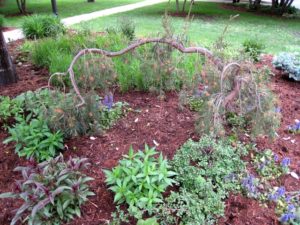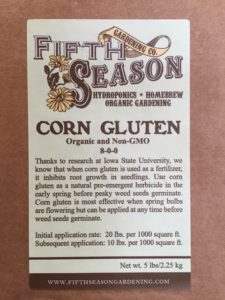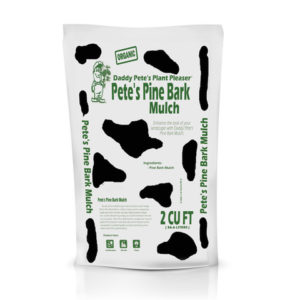-Chris Amaya-

With spring almost over, and the sun soon to be getting too hot for comfort during mid-day, its easy to accidentally forget to water the garden. Fortunately there is a natural buffer that allows plants to stay hydrated longer while simultaneously benefiting soil biology. Mulching the areas around established plants before pesky weeds can germinate will be your saving grace this season. Without mulching, these small, weedy plants can turn into big competition for your vegetables or ornamental beds, fighting for root space and ultimately stealing water. Crabgrass is notorious for getting out of hand quickly, with the ability to produce over 150,000 seeds from a single plant, and that remain viable for at least three years.
Choosing the best mulch for your gardening needs is simple, but first let’s start out by eliminating what not to use in your organic beds. Phasing out plastic in my organic garden has been long-term goal of mine, with several hurtles over the years, but in time it will be plastic free! Plastic mulch can degrade and leach in the soil, with the sun and rain taking its toll year after year. These petroleum products can prove harmful to human health, especially if you try to save a few bucks on the cheaper brands. It is also common for gardeners to leave the plastic mulch in place and simply cover it again with more plastic. This proves problematic because water and air cannot permeate the plastic, causing roots to grow very close to the soil surface exposed to the elements decreasing the life of the plant.

Grass clipping can be saved for the compost bin, as a great green (nitrogen) source, or used in the lawn for a nitrogen boost when considering its use as a mulch. If grass clippings are the only option to apply to your vegetable beds, I’d strongly recommend using corn gluten in conjunction with the clippings to prevent any germination of fresh grass seeds in your veggie garden. Of course, you don’t want to use corn gluten if your garden is at the seed-sowing stage, because it prevents seed germination. Only use it when you already have germinated plants or are using plant starts. Also beware that chemicals applied to the lawn may be retained in the mulch and be the cause of unintended harm to the plants the mulch is meant to benefit.
Gravel stones can be a very attractive option to accent landscapes for its variety in texture, color, and shape. Best use for these are for permanent borders separating garden and pathways to allow water to drain away during heavy rains. With no biological benefit to the soil life, pea gravel will retain heat creating hotspots in the garden or flower bed which the exact opposite from what we want in the summer.
Lastly, because we live in an area with an abundance of trees, sawdust is easily obtainable from local lumber mills and woodworking shops for an inexpensive price or sometimes free. I enjoy this as a mulch because it is natural, weed free, and brings down the ph for my blueberry bushes. Alternatively, if the sawdust is not blended with other materials it will become compact and not allow water to pass, thus suffocating the plant. If resourcing your own sawdust from a fallen tree, be sure to not use Black Walnut as a source of mulch for its toxicity to a wide range of plants.

With organic mulch, your hard work in the hot summer sun will not be in vein. Local leaf matter resourced in your area will breakdown faster because it is easily recognized by the natural biology around it. Simultaneously, your plants will thrive with vigor as their roots are being fed by the decomposition from the layers of organic matter you put down surrounding it. This will stimulate and support beneficial bacteria as they colonize the root zone to maintain integrity and fight off disease. Alternatively leaf mulch can hold too much moisture and suffocate planted flower bulbs if piled too high.
Straw mulch works very well suppressing weeds if you buy the “weed free” brand from the start. Its best to find straw that isn’t chopped too finely so that the straws sort of weave together. Be sure to keep the mulch a few inches from the base of the plant to discourage slugs and pests climbing up the stem.

Generally, I recommend investing in many different composts to add the soil to create a wider availability of nutrients, bacteria, and minerals through diversity. Even though compost will benefit the soil immensely, it has a chance to become too compact so adding greensand or perlite will create more airspace.

Leave a Reply